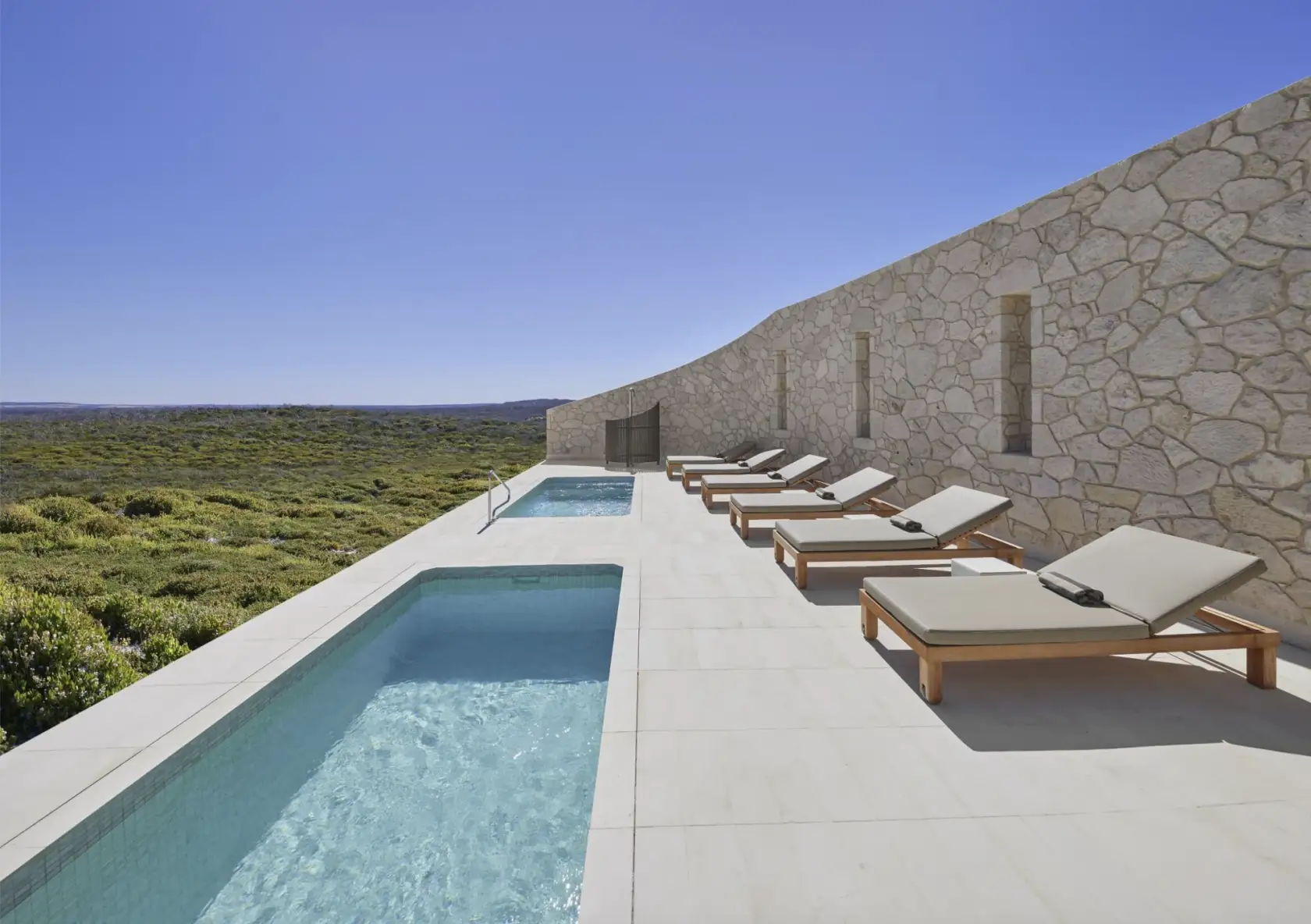

Swimming pool orientation and layout
As your journey to a new pool commences, there are some crucial decisions to be made in the early stages. One of the most significant things you’ll need to decide is how your pool is oriented and where you should place the deep end. It’s also important for your pool to integrate with your home and existing outdoor spaces to create a harmonious and usable environment. Let’s delve in.
As your journey to a new pool commences, there are some crucial decisions to be made in the early stages. One of the most significant things you’ll need to decide is how your pool is oriented and where you should place the deep end. It’s also important for your pool to integrate with your home and existing outdoor spaces to create a harmonious and usable environment. Let’s delve in.
Orientation and deep end placement
Orientation is a big one because there are lots of factors to consider: sunlight exposure, prevailing winds, views and privacy are all key concerns. It generally makes sense to position your pool lengthwise along the longest axis of your backyard, allowing for better sunlight exposure throughout the day, which means you can optimise warmth and natural illumination.
Work out the prevailing wind direction in your area and position the deep end accordingly. Locating it away from prevailing winds can reduce debris accumulation and offer a more comfortable poolside lounging experience. If your property offers a scenic view, orient the pool to maximise it, it will immediately elevate the ambiance of your outdoor space.
You also need to think about how the pool relates to the house, including placement of the deep end. Traditionally, this is located at one end of the pool – either nearer to or further from the patio/outdoor area, depending on your preference.
It’s worth remembering that swimmers typically spend more time in shallow areas, where they can stand, rather than treading water in the deep end. If you want swimmers and non-swimmers to easily socialise, it makes sense to have the shallow end closer to the house. It’ll also curb nuisance splashing if the kids are prone to bombing in the pool.
The beauty of modern concrete designs is that they can accommodate a degree of customisation, including unconventional options like placement of the deep ‘end’ in the middle of the pool – for a price, of course. If you really want to make use of the whole pool, incorporate bench seating in the deep end. This gives swimmers a spot to rest while they sip on a pina colada and it means you aren’t always crowding in the shallow end.
Integration with the surrounds
Your pool’s design should complement the architectural style of your home and integrate seamlessly with the surrounding landscape. Consider how the pool interacts with living areas, garden elements, and outdoor amenities to create a cohesive and functional outdoor living space.
Proximity to living areas
Placing the pool adjacent to indoor living spaces such as the patio or deck, encourages indoor-outdoor flow and facilitates easy access for entertaining and relaxation. Designate space for outdoor furniture, dining areas, and shade structures to really enhance usability and comfort.
Garden integration
Incorporate landscaping elements around the pool to soften hardscape surfaces and enhance visual appeal. Adding lush greenery, such as tropical plants or flowering shrubs, will create a tranquil and inviting atmosphere. Strategic placement of trees and shrubs can provide shade, privacy, and windbreaks, enhancing the comfort and beauty of your pool area.
Outdoor considerations
Evaluate other outdoor elements, such as existing structures, utilities, and topography, when designing your pool layout. Ensure adequate space for safety features, such as fencing and pool covers, to comply with local regulations and ensure a secure environment for family and guests. Factor in drainage requirements to prevent water runoff and erosion issues, especially if your property has slopes or uneven terrain.
Safety and accessibility
Prioritise safety and accessibility features when designing your pool layout. You need to think about barrier placement including fences and gates. Incorporate non-slip surfaces around the pool deck to minimise the risk of slips and falls, enhancing safety for swimmers of all ages.
There are plenty of accessibility features you can incorporate, like entry ramps, handrails, and shallow water lounging areas, not only to accommodate swimmers with mobility challenges but to also enhance usability overall. Talk to your pool designer or builder to ensure you comply with safety standards and regulations while incorporating personalised touches to suit your lifestyle and preferences.
Don’t rush in
Designing your dream swimming pool means having a good think in the initial stages. Considering sunlight exposure, wind direction and visual aesthetics before you make your final choices can have a huge impact on the end result. If you’re looking for an inviting oasis that adds value to your property, be sure to consult a SPASA member, who can offer all the expert advice you need.
